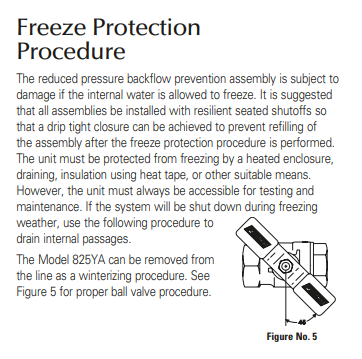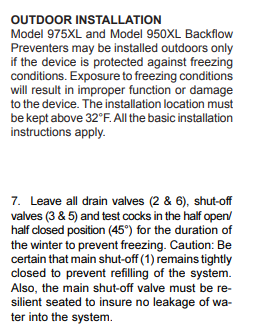How To Winterize Irrigation Backflow Prevention Devices
The backflow prevention device is the most important (and most expensive) component of a home’s irrigation system.
There are two types approved for use on irrigation systems in Virginia, the RPZ and the PVB. Both devices are highly susceptible to freeze damage, as they are installed above ground which typically makes them the first component or an irrigation system to sustain freeze damage. In order to minimize costs associated with repair or replacement of the irrigation system’s backflow prevention device, it is important to properly winterize. Richmond Irrigation always follows the manufacturer recommendations when servicing your home’s irrigation system. After properly winterizing an irrigation system by turning off the water and blowing out the lines with high volume, low pressure air – all the valves (ball valves and test ports) on a backflow prevention device should be left in a 45° (half open) position. Each manufacturer of backflow prevention devices specifies this procedure – see below for snips from product literature.
Winterization Procedure for Irrigation Backflow Prevention Devices
In order to follow the manufacturer recommendations for winterization, the ball valves and test ports of a backflow prevention device will be turned to the 45° position (half open position) and remain as such until spring startup.
On a PVB backflow prevention device there will be two ball valves and two test ports turned to the 45° position. To properly setup an RPZ backflow prevention device for the winter months, there will be two ball valves and four test ports turned at 45°. Again, this is the half open position – so it is important to return these valves to the normal position prior to spring startup. See the pictures (left) for more information. The RPZ backflow prevention device pictured to the far left is properly setup for the winter months, two ball valves and four test ports turned to the half open position (45°). The picture to the right shows an RPZ that is now ready for the water to be turned back on for the spring, two ball valves turned to the fully open position and four test ports turned to the fully closed position.
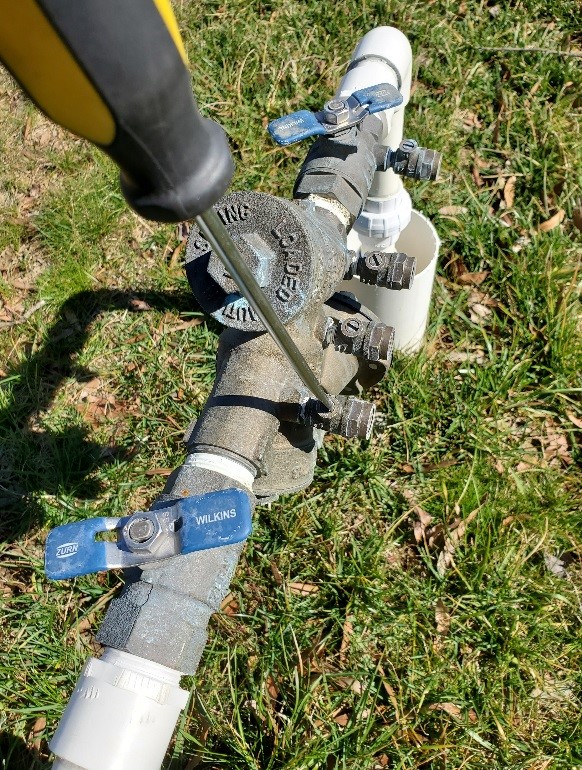
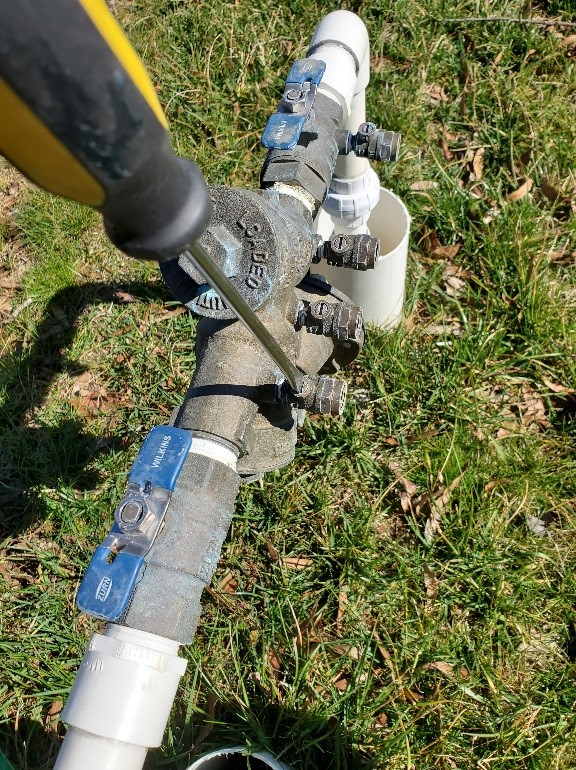
Most backflow prevention devices for irrigation systems in Richmond are installed on pvc piping with unions. The unions allow the backflow prevention device to be easily removed (without cutting pipe) for service. These unions are typically left in a ‘loose’ position over the winter months. Prior to turning the water back on for the spring startup, the o-rings of the unions need to be inspected and replaced if needed. Once verifying the o-rings are properly installed, the unions must be hand-tightened.
The pictures below show how a union allows the backflow prevention device to be easily removed from the pvc piping by simply unthreading it. You can also see the o-ring of the union that must be checked and replaced (if needed).
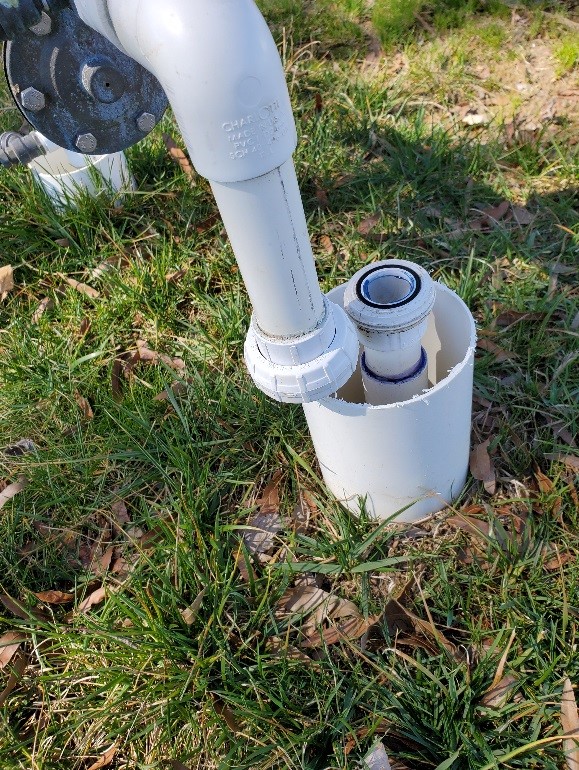
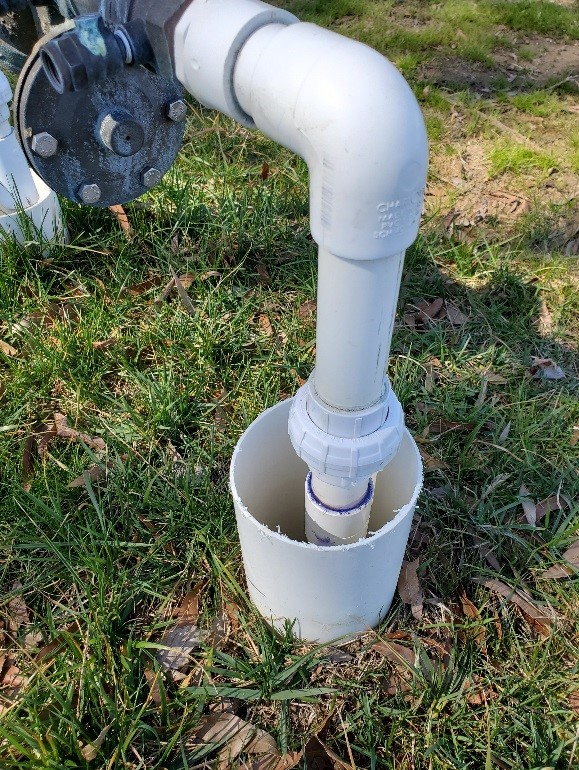
If requested, Richmond Irrigation will remove your backflow prevention device so you can safely store it in a heated environment over the winter months. However, we do not recommend this as it is not necessary to prevent freeze damage and it also allows for dirt/debris to possibly enter your system.
